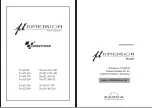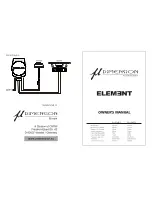
Figure 3. Typical output power vs. speaker load impedance for the
VA300 Vocal Master
Column Speaker Placement:
It must always be kept in mind that every room or space is
acoustically unique and there are no set “rules” for speaker
placement. A number of generalizations however may be made
which will at least provide a good starting point under various
conditions.
A l w a y s c o n s i d e r s p e a k e r p l a c e m e n t i n
r e l a t i o n t o
microphone placement. It is desirable for the loudspeakers and
microphones to be in close proximity in order to provide the
illusion of source-oriented sound. Source-oriented sound,
ideally should provide the listener with the illusion that all of
the sound is coming directly from the sound source, the stage
or performance area. It is also desirable to keep loudspeakers
a n d m i c r o p h o n e s s e p a r a t e d i n o r d e r t o a c h i e v e a h i g h
threshold of acoustic feedback. While these statements are
c o n t r a d i c t o r y , a g o o d s o l u t i o n t o b o t h c a n g e n e r a l l y b e
accomplished.
When the VA300-S Speaker Columns are used on stage, as
they most often are with a portable system, the speakers
should be placed at the sides of the stage and as far forward as
possible. With this setup, the entire stage area will be relatively
free from acoustic feedback; also the illusion of sound coming
from the center of the stage will be quite good except for the
first few forward rows of seats.
The Shure VA300-S Speaker Column has been designed
with rear ports to give the column a bidirectional horizontal
polar pattern below 200 Hz. This design feature was decided
upon in order to reduce low frequency acoustic feedback and
provide a relatively “dead” area at the sides of the column
with the result that microphones may be placed there with
minimal feedback problems at low frequencies.
Try to keep the speaker columns above the heads of the
audience. The easiest way to do this is put the speaker col-
umns on the stage. If the stage is only a foot or two high, raise
the speaker columns up by placing them on a solid platform or
box.
Keeping in mind that the speaker columns have a narrow
coverage angle in the vertical plane and a broad coverage angle
in the horizontal plane, here are a few generalizations on
speaker requirements for various room shapes.
A deep, narrow auditorium would generally require only
two speakers if the seating is all on one level. If balconies were
added to this same room, additional speaker columns would be
required to aim sound up into them.
A shallow, broad room might require four speakers to be
utilized in order to cover the extreme horizontal expanse.
Again if balconies were added, four more speakers might be
required to expand the vertical coverage.
The “Theatre-in-the-Round” will almost always necessitate
the use of at least four columns. More speakers might be re-
quired to provide adequate horizontal coverage if the theatre is
very deep.
To “aim” speakers up for effective coverage of a balcony,
use the Shure Model A3S-S Speaker Stand. This stand will
provide added stability and approximately 150 of tilt. In an
emergency, a spare microphone stand can be used to hold up a
tilted speaker column. Adjust the height of the microphone
stand to one or two inches less than the height of the top edge
of the upper rear port on the back of the speaker. Tilt the
speaker back until the top edge of the upper rear port rests on
the top of the microphone stand. Changing the height of the
microphone stand adjusts the amount of tilt on the speaker.
The VA300-S Speaker Column may be used on its side,
though this reduces the horizontal coverage and the penetra-
ting power. In a low ceiling, small intimate room such as a
night club, horizontal mounting, at or near the ceiling level
may be very successful. An alternate solution for this type of
small room is to use VA301-S Monitor Speakers. It is not
recommended that the VA300-S Speaker Column be used on
its side in larger rooms.
It is not possible to adequately cover all phases of speaker
placement in all types of rooms in this manual. Just remember
that every room is acoustically different from any other and
therefore speaker placement will vary from room to room.
Good speaker placement will provide the audience with
even distribution of sound intensity, sound which is free from
excessive reverberation and ethos, and the illusion of sound
emanating from the real source.
Power Connections:
Connect the line cord (12) to an outlet which supplies 120
volts AC, 60 Hz. power. The three-position toggle switch on
the front panel of the VA300 controls power to the Console.
This three-position switch (10) is used to reverse line polarity,
for minimum hum.
If extension cords are required to supply power to the
VA300, a high quality #18 gauge or larger cord should be
used.
Do not connect more than one VA300, or other amplifier
to one extension cord. Use separate extension cords for each
amplifier. Use a maximum of two VA300’s or other amplifier
per 120 volt house circuit. Failure to adhere to the above will
result in loss of available output power and the risk of blowing
house fuses, but will in no way damage the VA300 amplifier.
7







































